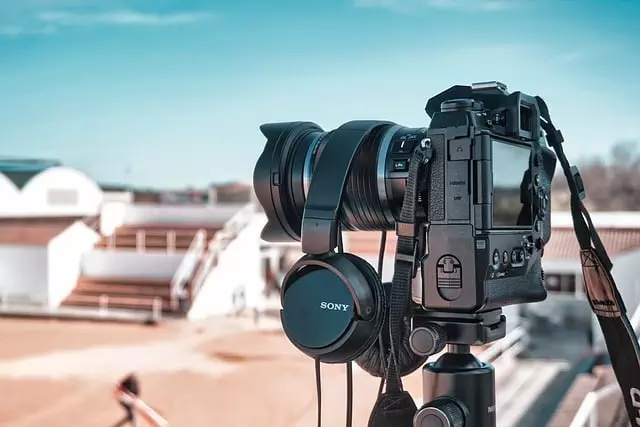Playing DivX videos on your PC is effortless with the right tools. Start by installing a media player like VLC, which supports DivX codecs, simply dragging your video file into the interface for seamless playback. For optimal viewing, adjust bitrate and resolution settings in DivX to balance file size and quality. Select efficient encoding software like HandBrake or x264 for size reduction while preserving detail, ensuring smooth DivX playback on your PC without buffering or quality loss, whether for online sharing or offline archival.
# How to Play DivX on Your PC: Mastering Video Compression Without Quality Loss

To play DivX videos seamlessly on your PC, you first need to ensure compatibility. DivX is a popular video compression format known for its high-quality output while maintaining efficient file sizes. The process begins by installing a compatible media player that supports DivX codecs. VLC Media Player is a widely recommended option as it’s free and open-source, making it accessible to all users. After installation, simply launch the player and drag your DivX video file onto its interface—it’s that straightforward!
Mastering video compression without sacrificing quality involves understanding bitrates and resolution settings. DivX offers flexibility in these areas, allowing users to adjust parameters according to their needs. Lower bitrates reduce file size but may impact visual fidelity, while higher bitrates preserve detail at the cost of larger file volumes. Balancing these factors ensures you play DivX videos on your PC without compromising quality, ensuring an enjoyable viewing experience.
Understanding DivX and Its Advantages: Explore the DivX video format, its history, and the key benefits it offers, especially in terms of compression without sacrificing quality.

Choosing the Right Encoding Software: Provide a guide to selecting efficient and user-friendly video encoding tools that support DivX output. Discuss features like bit rate control, codec selection, and preset options for optimal quality and size.

When compressing video data for quality and size, selecting the right encoding software is crucial. Tools that support DivX output, such as HandBrake or x264, offer a balance between file size reduction and maintaining high-quality visuals. Bit rate control allows users to set a target size while ensuring smooth playback; lower bit rates reduce file size but may impact video quality, so finding the right balance is key. Codec selection also matters; DivX itself is a codec that excels at compressing video efficiently without significant loss in quality. Preset options in these tools are user-friendly, offering quick settings for common use cases—from “Fast” for speed to “High” for best possible quality within a given file size.
These features simplify the compression process for users who want to play DivX on their PCs, ensuring that the output video retains its rich detail and visual appeal despite being compressed. With practice, users can fine-tune these settings to achieve optimal results tailored to their specific needs, from sharing online to offline archival purposes.
Optimizing Video Settings for DivX Compression: Delve into the art of balancing compression and quality. Explain key settings to adjust, such as resolution, frame rate, and encoding method, along with best practices to ensure high-quality output while minimizing file size.

When optimizing video settings for DivX compression, the key lies in finding a harmonious balance between file size reduction and preserving video quality. Start by adjusting the resolution; lower resolutions significantly reduce file size but may impact visual clarity. A common compromise is 720×480 or 640×480, offering a good trade-off for most users. Next, consider frame rate. Lowering it from the standard 30 fps to 24 fps or even 15 fps can substantially shrink file size without noticeable flickering, as human eyes are less sensitive to frame rate changes than to resolution.
The encoding method is another critical setting. DivX offers various profiles, each optimized for different types of content. For general-purpose videos, the “High” quality profile provides good compression with minimal quality loss. Experiment with bitrate settings too; a higher bitrate results in better quality but larger files. Aiming for 1000-2000 kbps is generally sufficient for high-quality DivX video while keeping file sizes manageable, especially when streaming or playing on devices like your PC using compatible players (e.g., VLC Media Player).
Testing and Comparing Encoded Videos: Emphasize the importance of thorough testing. Share methods for evaluating encoded DivX videos, including visual inspection, playing on various devices, and measuring performance using dedicated tools.

Mastering video compression without quality loss is now within reach with DivX. By understanding its advantages, choosing the right encoding software, optimizing video settings, and thoroughly testing encoded videos, you can effortlessly play DivX on your PC while maintaining exceptional video quality. Follow these steps to compress your media without any compromises.
